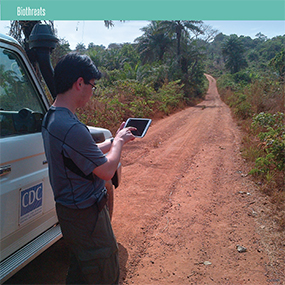NCEZID Innovations: Biothreats
Responding To Outbreaks With The Touch Of A Finger
During the past 3 years, public health workers who have served in the two largest emergency responses in CDC history have learned valuable lessons. Confronting epidemics of Ebola and Zika has shown public health experts what we’re doing right and where we need to improve. One of the biggest take-aways from both responses is that information needs to be made available to responders as quickly as possible. During an outbreak, lives can depend on first responders, laboratories, and clinicians having access to accurate information about the disease and the risk to patients.
To make information more available during an outbreak, NCEZID experts developed mobile apps for first responders and laboratories. The apps are not merely informational but also useful as training tools.
Field Facts App
The Field Facts App gives responders in the field specific information about the pathogen that is causing a disease outbreak. When opening the app, users will receive information on the ways people can be exposed to the pathogen, how the disease is spread, and disease symptoms. The app also gives users general information on biosafety, what kind of protective clothing to wear and emergency contact information.
LRN Rule-Out and Refer App
During an outbreak, laboratorians need to rapidly eliminate pathogens that are not involved so they can zero in on the pathogens that are causing the outbreak. The LRN Rule-Out and Refer app (named for CDC’s Laboratory Response Network) gives users a Step-by-step guide for ruling out biothreats and biochemical test images and videos to help specifically identify pathogens. Easily accessible information helps laboratorians working in the field to complete these processes more quickly during an outbreak.

Download printable PDF version: Innovations to Stop Emerging and Zoonotic Infections [32 pages]
CDC experts have created mobile and tablet applications that offer, at the touch of a finger, information needed during a large disease outbreak.